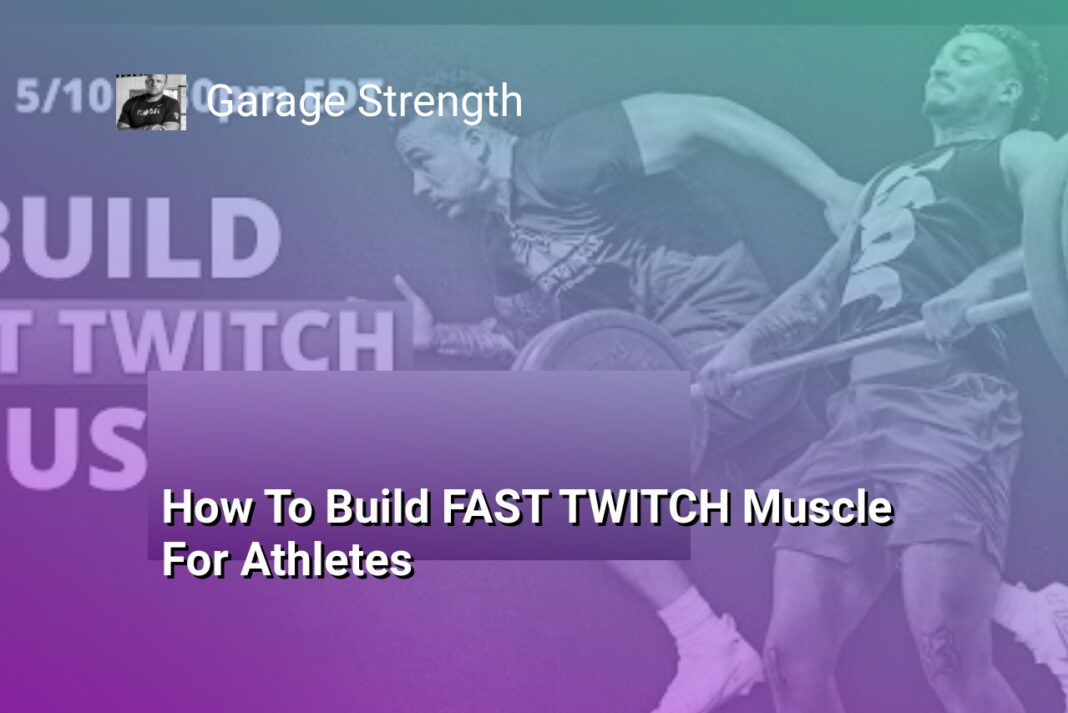The Bottom Line:
- As someone who helps actors transform their bodies, I’m excited to share a beginner’s guide to getting in shape and embarking on a body transformation journey. This video will cover essential aspects of nutrition and exercise, with a focus on a 6-week Summer Challenge.
- Crafting a proper training plan is crucial, as it encompasses the duration, frequency, and activities of your workouts, as well as setting realistic, measurable goals. I’ll provide tips on creating a balanced plan with both compound and isolation exercises to target multiple muscle groups.
- Equally important is developing a nutrition plan that aligns with your goals, whether that’s weight loss or muscle gain. Understanding the concept of calorie control and macronutrient balance is key to ensuring your training efforts are complemented by a healthy diet.
- Consistency and adherence are the real challenges in a body transformation journey. I’ll share strategies to help you stick to your plans, including the importance of rest and recovery, as well as the benefits of a structured approach like the 6-week Summer Challenge.
- Ultimately, this guide is designed to provide you with the knowledge and tools to embark on a successful, sustainable body transformation, empowering you to achieve the summer body you’ve always wanted, regardless of your starting point.
Setting Achievable Fitness Goals
Crafting a Sustainable Fitness Plan
Achieving your fitness goals requires a well-designed plan that is tailored to your individual needs and capabilities. The key is to set achievable objectives that you can consistently work towards, rather than aiming for unrealistic or unsustainable targets.
Defining Measurable Goals
When setting your fitness goals, it’s important to be specific and quantifiable. Instead of simply aiming to “lose weight” or “get in shape,” consider setting concrete targets such as losing a certain number of pounds or inches, or increasing your strength or endurance by a specific amount. This will allow you to track your progress and stay motivated throughout your journey.
Balancing Compound and Isolation Exercises
Your training plan should include a mix of compound exercises, which engage multiple muscle groups simultaneously, and isolation exercises that target specific muscle groups. This balanced approach will help you build overall strength and definition, while also addressing any imbalances or weaknesses. Incorporating both types of exercises into your routine will ensure that you’re working your entire body effectively.
Remember, the key to success is creating a plan that is both challenging and sustainable. By setting achievable goals, prioritizing rest and recovery, and maintaining a balanced approach to your training and nutrition, you’ll be well on your way to transforming your body and achieving your fitness aspirations.
Designing an Effective Training Plan
Establishing Realistic Goals
When designing an effective training plan, it’s crucial to set realistic goals that you can achieve through your training. Many people make the mistake of setting overly ambitious goals, such as dramatic weight loss or significant muscle gain, without considering their starting point and the time frame. Instead, focus on setting achievable goals for your first segment of the journey, which in this case is the 6-week summer challenge.
A typical guideline for healthy weight loss is 1-2 pounds per week. Therefore, a realistic goal for the 6-week challenge could be to lose 9-10 pounds. It’s important to remember that muscle weighs more than fat, so the number on the scale may not be the best indicator of progress. Consider using a combination of tools, such as a scale, measuring tape, and a mirror, to track your progress more accurately.
Determining Training Frequency and Duration
Another crucial aspect of designing an effective training plan is determining how much time you can dedicate to your workouts. It’s important to be realistic and choose a schedule that you can consistently maintain. Even if it’s just a few sessions per week, the key is to create a sustainable habit.
When deciding on your training frequency, keep in mind that your workouts should be intense enough to help you reach your goals. For example, if you can only make it to the gym on weekends, your sessions will need to be longer and more challenging to compensate for the reduced frequency.
Balancing Compound and Isolation Exercises
A well-rounded training plan should include a balance of compound and isolation exercises. Compound exercises, such as squats and deadlifts, engage multiple muscle groups simultaneously, while isolation exercises, like bicep curls, target specific muscle groups.
Including both types of exercises in your training plan is essential for optimal results. Compound exercises should be the foundation of your workouts, as they provide the most efficient and effective way to build muscle and burn fat. Isolation exercises can then be used to target and refine specific muscle groups.
Remember, it’s important to avoid over-focusing on certain muscle groups, as this can lead to muscle imbalances and increase the risk of injury. Aim for a balanced approach that addresses all the major muscle groups.
Mastering Nutrition for Weight Loss or Muscle Gain
Calorie Control: The Foundation of Nutrition for Body Transformation
Achieving your body transformation goals, whether it’s weight loss or muscle gain, starts with mastering the fundamentals of nutrition. The key is understanding the concept of calorie control. If your goal is to lose weight, you need to be in a calorie deficit, meaning you consume fewer calories than your body burns. Conversely, if your aim is to build muscle, you’ll need to be in a calorie surplus, consuming more calories than you expend.
Macronutrient Balance: The Importance of Protein, Carbs, and Fats
While calorie control is the foundation, it’s equally crucial to pay attention to your macronutrient intake. Macronutrients are the three main nutrients we get from food: protein, carbohydrates, and fats. Protein is essential for building and maintaining muscle, while carbs and fats serve as the body’s primary fuel sources. Striking the right balance of these macros is key to supporting your body’s needs during your transformation journey.
Meal Planning and Tracking: Simplifying Nutrition for Consistent Results
To make the nutrition aspect of your transformation easier, consider meal planning and tracking your intake. Plan your meals in advance, focusing on nutrient-dense whole foods that align with your calorie and macronutrient targets. Using a food tracking app or keeping a detailed food journal can help you stay accountable and make adjustments as needed. Remember, consistency is key when it comes to nutrition, so find strategies that work for your lifestyle and preferences.
By mastering the fundamentals of nutrition, including calorie control and macronutrient balance, you’ll set the stage for successful body transformation. Pair this knowledge with a well-designed training plan, and you’ll be well on your way to achieving your summer body goals.
Balancing Macronutrients for Optimal Results
Importance of Macronutrient Balance
Achieving optimal body transformation results goes beyond simply controlling your calorie intake. It’s essential to pay close attention to the balance of macronutrients – protein, carbohydrates, and fats – in your diet. Each macronutrient plays a crucial role in supporting your fitness goals, whether it’s building muscle, burning fat, or maintaining overall health and well-being.
Protein for Muscle Growth and Preservation
Protein is the building block of muscle tissue, making it essential for both muscle growth and preservation during a fat-loss phase. Ensuring an adequate intake of high-quality protein sources, such as lean meats, fish, eggs, and plant-based options like beans and lentils, can help support your body’s ability to build and maintain lean muscle mass. This, in turn, can boost your metabolism and aid in the fat-burning process.
Carbohydrates as Fuel for Performance
Carbohydrates are the primary source of energy for your body, particularly during intense exercise. Incorporating the right types and amounts of carbohydrates, such as whole grains, fruits, and vegetables, can help fuel your workouts, support muscle recovery, and provide the energy needed to push through your training sessions. Balancing carbohydrate intake with your activity levels is crucial to ensure you have enough energy without consuming excess calories.
Healthy Fats for Hormone Balance and Overall Health
Contrary to popular belief, fats are not the enemy when it comes to body transformation. In fact, healthy fats, such as those found in avocados, nuts, seeds, and fatty fish, play a vital role in hormone production, nutrient absorption, and overall health. Ensuring a balanced intake of healthy fats can help support your body’s natural processes, optimize recovery, and contribute to a more sustainable and well-rounded approach to your transformation journey.
By understanding the importance of macronutrient balance and incorporating the right proportions of protein, carbohydrates, and healthy fats into your diet, you can create a nutrition plan that supports your body transformation goals while promoting overall health and well-being.
Staying Motivated and Consistent with Your Transformation
Developing a Sustainable Mindset
Embarking on a body transformation journey requires more than just a temporary burst of motivation. To ensure long-lasting success, it’s crucial to cultivate a sustainable mindset that will carry you through the ups and downs. One key aspect is to set realistic goals that align with your lifestyle and abilities. Avoid the temptation of unrealistic or extreme targets, as they can quickly lead to frustration and burnout. Instead, focus on gradual, achievable milestones that you can celebrate along the way.
Embracing the Process
Transformation is not a linear path; it’s a dynamic journey filled with both progress and setbacks. Embrace this process and learn to view challenges as opportunities for growth, rather than obstacles to overcome. Celebrate small victories, and don’t be too hard on yourself when you encounter roadblocks. Consistency is key, but it’s equally important to be kind to yourself and adjust your approach as needed.
Building a Support Network
Surrounding yourself with a supportive network can make a significant difference in your ability to stay motivated and consistent. Enlist the help of friends, family, or even an online community who can provide encouragement, accountability, and a sense of camaraderie. Sharing your journey with others can help you stay on track and find inspiration when you need it most.





